Following a database transfer in Dynamics 365 Finance, custom routines or scripts are routinely executed to update configurations, anonymize sensitive data, etc.
For instance, following a production database being copied to a sandbox environment in Dynamics 365 Finance, it may be necessary to anonymize specific tables or remove configurations to reflect the nature of the non-production environment.
To implement this dynamic behavior or even block the execution if erratically is deployed in production. We need dynamically determine the environment to execute proper actions ( Production, Sandbox, etc.)
This article aims to explore the identification of the environment within Dynamics 365 Finance using X++. We will achieve this by querying Lifecycle Services (LCS) to retrieve the environment type where the code is currently executing.
Dynamics 365 Finance and Operations applications leverage Lifecycle Services (LCS), a Microsoft Dynamics portal, for managing implementations. LCS provides a REST API that facilitates querying environment metadata. However, this REST service is subject to a rate limit. As of the time of writing, LCS restricts usage to a maximum of 6 calls per minute. Consequently, frequent calls from routines are not advisable.
Setting app registration
The first step is to create an app registration on Azure Active Directory.
Open Azure Portal located in https://portal.azure.com/
Select the Azure Active Directory service.
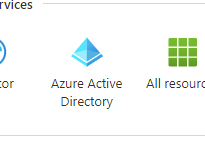
Select App registrations.
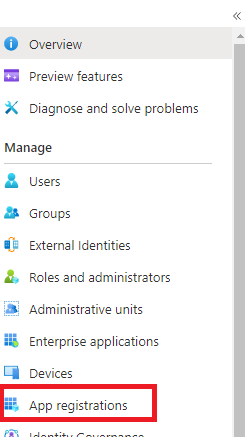
Select “New registration”
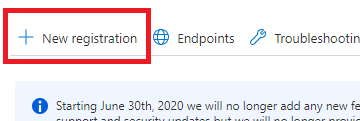
Enter a new Name and register the app.
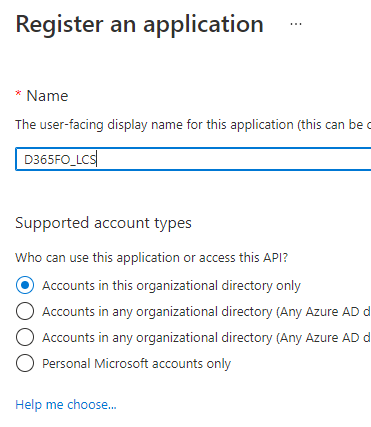
Select “API permissions”.
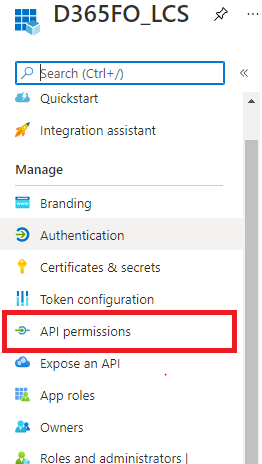
Select “Add a permission”.
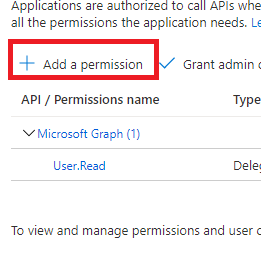
Search for Dynamics Lifecycle services and add the user_impersonation permission to your app.
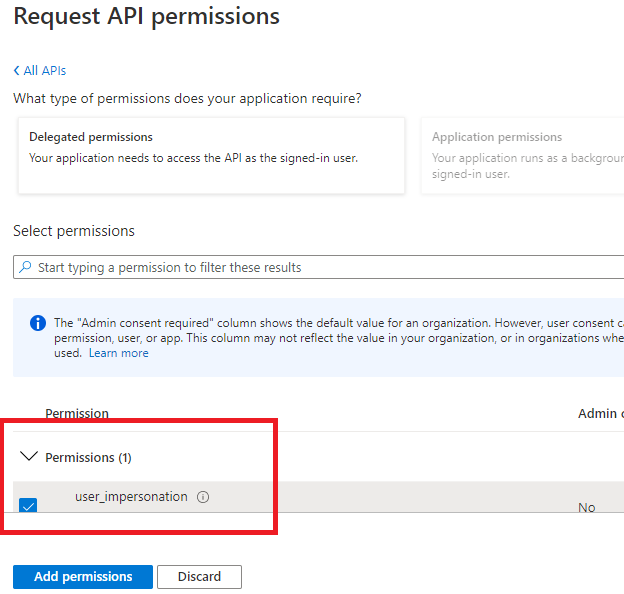
Select Certificates & secrets and define a new secret value for authentification.
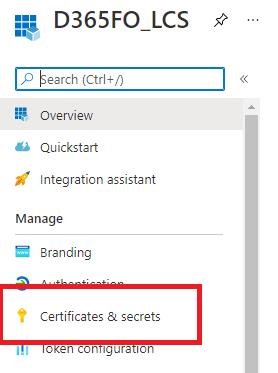
API using Postman
The next step, execute a simple test with the postman to validate that requests are successful.
Create a Post Request. Define variables according to your environment. After successfully generating credentials, copy the “access_token” value to reuse in the next step.
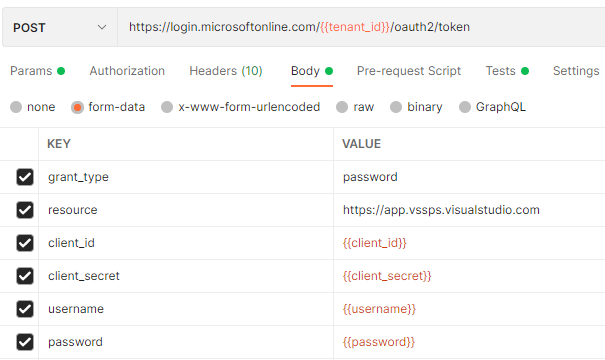
Create a Get Request to https://lcsapi.lcs.dynamics.com/environmentinfo/v1/detail/project/{projectId}/?environmentId={environmentId}.
Replace projectId and environmentId from LCS values.
Paste token value from step 1.

Define mandatory and fixed values of request.
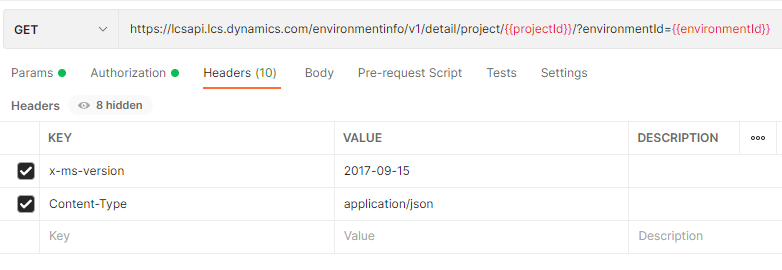
After submitting the request, you should get a similar JSON answer. The values that we need for now are IsSuccess and EnvironmentType.
1
2
3
4
5
6
7
8
9
10
11
12
13
14
15
| {
"ResultPageCurrent": 1,
"ResultHasMorePages": true,
"Data": [
{
"EnvironmentId": "d15ed3a2c2c140547740b946c43915da3",
"EnvironmentName": "MainProdEnv",
"ProjectId": 123456,
"EnvironmentInfrastructure": "MicrosoftManaged",
"EnvironmentType": "Production",
......
}
],
"IsSuccess": true,
}
|
Implementing in X++
Define simple utility functions to get current environment info.
1
2
3
4
5
6
7
8
9
10
11
12
13
14
15
16
17
18
19
20
21
22
23
24
25
26
27
28
29
30
31
32
33
34
35
36
37
38
39
40
| {
/// <summary>
/// get the environment information
/// </summary>
/// <returns></returns>
private static IApplicationEnvironment getEnvironment()
{
return EnvironmentFactory::GetApplicationEnvironment();
}
/// <summary>
/// get the tenant id
/// </summary>
/// <returns>tenant id</returns>
private static str getTenantId()
{
IApplicationEnvironment appEnvironment = LCSApiDemo::getEnvironment();
return appEnvironment.Aad.TenantDomainGUID;
}
/// <summary>
/// Gets the value for the lcs api endpoint setting from configuration
/// </summary>
/// <returns>LCS API endpoint</returns>
public static str getLcsApiEndpoint()
{
IApplicationEnvironment appEnvironment = LCSApiDemo::getEnvironment();
return appEnvironment.LCS.LCSAPIEndPoint;
}
/// <summary>
/// get the environment id
/// </summary>
/// <returns>returns the environment id web config value if set or empty string if not set</returns>
public static str getEnvironmentId()
{
IApplicationEnvironment appEnvironment = LCSApiDemo::getEnvironment();
return appEnvironment.LCS.LCSEnvironmentId;
}
}
|
Create a class to deserialize JSON answer from OAuth. The main property to get is access token.
1
2
3
4
5
6
7
8
9
10
11
12
13
14
15
16
17
18
19
20
21
22
23
| {
/// <summary>
/// OAuth Authentication Answer
/// </summary>
[DataContractAttribute]
public class LCSAuthenticationToken
{
str accessToken;
/// <summary>
/// Authentication is successful
/// </summary>
/// <param name = "_accessToken"></param>
/// <returns></returns>
[DataMemberAttribute('access_token')]
public str parmAccessToken(str _accessToken = accessToken)
{
accessToken = _accessToken;
return accessToken;
}
}
}
|
Using RestSharp a popular library to handle REST API’s we will execute our HTTP requests.
Out of the box, Postman can generate RestSharp code from a request by pressing “code”. Let’s adjust generated code to our needs.
1
2
3
4
5
6
7
8
9
10
11
12
13
14
15
16
17
18
19
20
21
22
23
24
25
26
27
28
29
30
31
32
33
34
35
36
| {
/// <summary>
/// Get the Azure AD token
/// </summary>
/// <param name = "_clientId">Application Id</param>
/// <param name = "_secreat">Apllication secret</param>
/// <param name = "_username"></param>
/// <param name = "_password"></param>
/// <returns>Azure AD token</returns>
public LCSAuthenticationToken authentication(str _clientId, str _secreat, str _username, str _password)
{
str url = strFmt(authUrl, LCSApiDemo::getTenantId());
RestClient restClient = new RestClient(url);
RestRequest request = new RestRequest(Method::POST);
request.AlwaysMultipartFormData = true;
request.AddParameter('grant_type', 'password');
request.AddParameter('client_id', _clientId);
request.AddParameter('client_secret', _secreat);
request.AddParameter('username', _username);
request.AddParameter('password', _password);
request.AddParameter('resource', LCSApiDemo::getLcsApiEndpoint());
IRestResponse response = restClient.Execute(request);
LCSAuthenticationToken token = FormJsonSerializer::deserializeObject(classNum(LCSAuthenticationToken), response.Content);
if (!token.parmAccessToken())
{
throw error("@ApplicationPlatform:OAuthCodeFailed");
}
return token;
}
}
|
Implement contract classes to deserialize LCS environment info.
1
2
3
4
5
6
7
8
9
10
11
12
13
14
15
16
17
18
19
20
21
22
23
24
25
26
27
28
29
30
31
32
33
34
35
36
37
38
39
40
41
42
43
44
45
46
47
48
49
50
51
52
53
54
55
56
57
58
59
60
61
62
63
64
65
66
67
68
69
70
71
| {
/// <summary>
/// Environment request answer
/// </summary>
[DataContractAttribute]
class LcsEnvironmentInfo
{
boolean isSuccess;
List environments;
/// <summary>
/// if request was successful
/// </summary>
/// <param name = "_isSuccess"></param>
/// <returns></returns>
[DataMemberAttribute('IsSuccess')]
public boolean parmAccessToken(boolean _isSuccess = isSuccess)
{
isSuccess = _isSuccess;
return isSuccess;
}
/// <summary>
/// Environment data rows
/// </summary>
/// <param name = "_environments"></param>
/// <returns></returns>
[DataMemberAttribute('Data'), DataCollectionAttribute(Types::Class, classStr(LCSEnvironmentData))]
public List parmLines(List _environments = environments)
{
environments = _environments;
return environments;
}
}
/// <summary>
/// LCS Dynamics 365 Finance Environment Detail
/// </summary>
[DataContractAttribute]
class LCSEnvironmentDetail
{
str environmentId;
str environmentType;
/// <summary>
/// LCS Environment Id
/// </summary>
/// <param name = "_environmentId"></param>
/// <returns></returns>
[DataMemberAttribute('environmentId')]
public str paramEnvironmentId(str _environmentId = environmentId)
{
environmentId = _environmentId;
return environmentId;
}
/// <summary>
/// LCS Environment Type
/// </summary>
/// <param name = "_environmentType"></param>
/// <returns></returns>
[DataMemberAttribute('environmentType')]
public str parmAccessToken(str _environmentType = environmentType)
{
environmentType = _environmentType;
return environmentType;
}
}
}
|
Again, using RestSharp. Execute HTTP request to get environment detail.
1
2
3
4
5
6
7
8
9
10
11
12
13
14
15
16
17
18
19
20
21
22
23
24
25
26
27
28
| {
/// <summary>
/// Get LCS Environment Info
/// </summary>
/// <param name = "_token">OAuth Token</param>
/// <param name = "_projectId">LCS Projecct ID</param>
/// <returns></returns>
public LCSEnvironmentInfo getEnvironmentInfo(LCSAuthenticationToken _token, str _projectId)
{
str url = strFmt('%1/environmentinfo/v1/detail/project/%2/?environmentId=%3',
LCSApiDemo::getLcsApiEndpoint(),
_projectId,
LCSApiDemo::getEnvironmentId());
RestClient restClient = new RestClient(url);
RestRequest request = new RestRequest(Method::GET);
request.RequestFormat = RestSharp.DataFormat::Json;
request.AddHeader("Content-Type", "application/json");
request.AddHeader("x-ms-version", "2017-09-15");
request.AddHeader("Authorization", "Bearer " + _token.parmAccessToken());
IRestResponse response = restClient.Execute(request);
LCSEnvironmentInfo envInfo = FormJsonSerializer::deserializeObject(classNum(LCSEnvironmentInfo), response.Content);
return envInfo;
}
}
|
Photo by Luca Bravo on Unsplash











